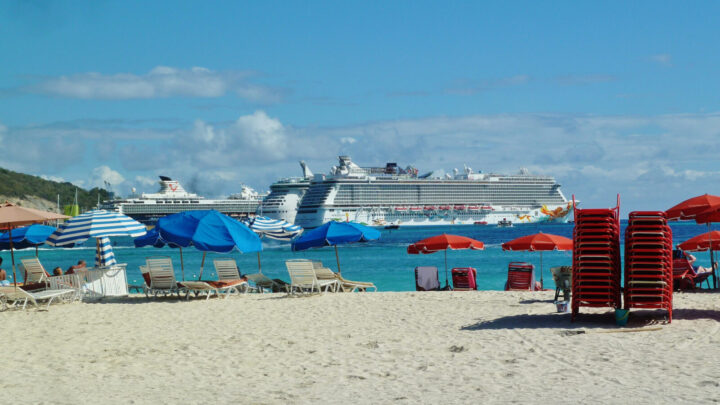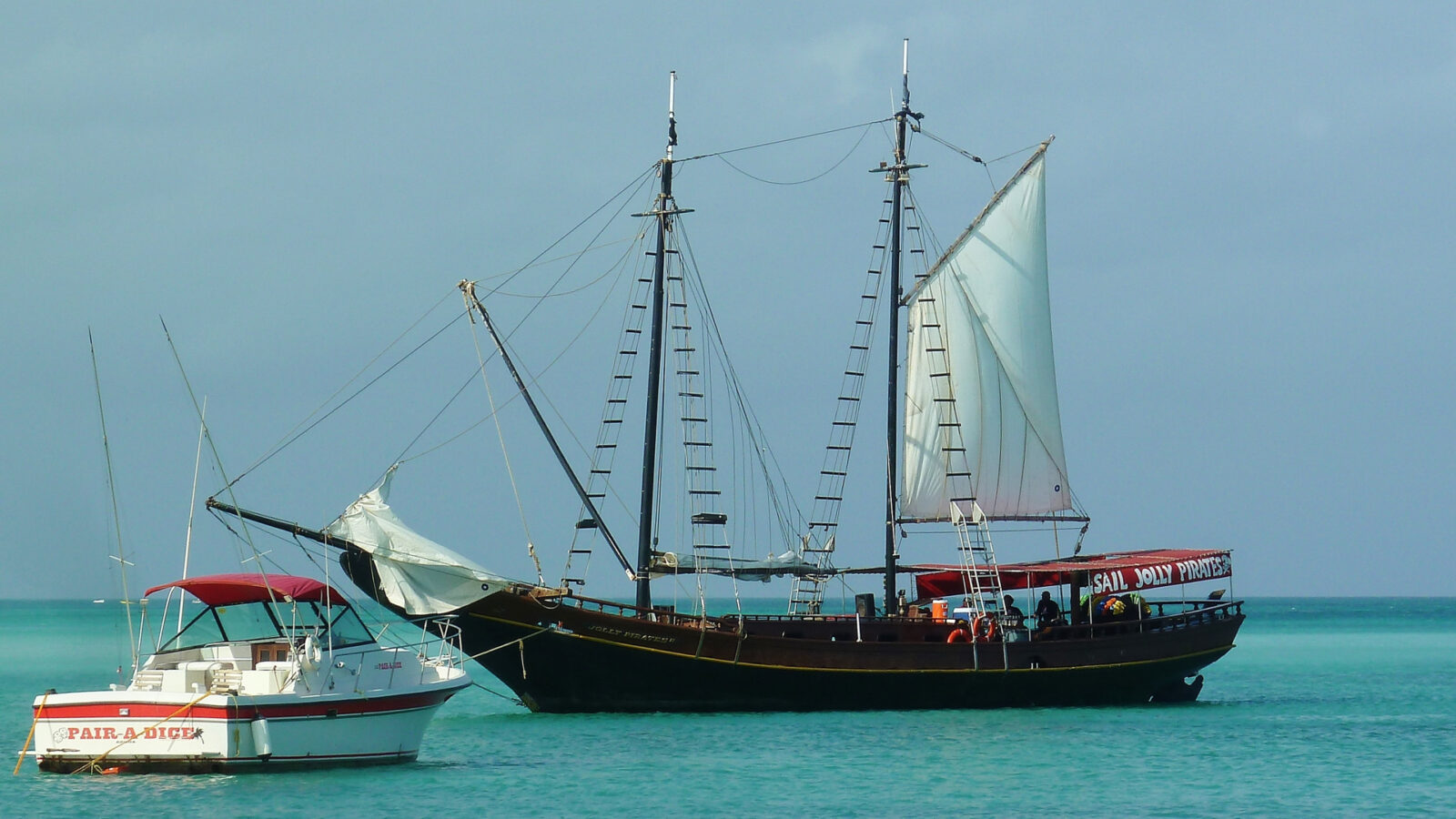
When I saw the itinerary for a 14-night Caribbean cruise to the islands of Aruba, Curaçao and Sint Maarten I was hooked! Once part of the Netherlands Antilles, the islands are constituent countries of the Kingdom of the Netherlands.
Aruba
Like many people, I’d always imagined Caribbean islands as being lush with vegetation and subject to tropical rain by the bucketload. Aruba was a surprise then, as it is quite arid and depends on its desalination plant for nearly all of its water. We chose to take a short tour of the island, finishing with a sail on the Jolly Pirates schooner to Malmok Bay. We snorkelled over the wreck of the SS Antilla, a German cargo ship that was scuttled there by its crew during World War 2, rather than have it captured by the allies. I have snorkelled many times in Australia and in Fiji, but never over a wreck, so that was exciting. The wreck has become an artificial reef, attracting many varieties of fish and coral. After distributing samples of a local rum cocktail, the crew of the Jolly Pirates encouraged those who were game to try their hand at swinging on a rope out from the ship and dropping into the sea. Ever ready to try something new – and unwisely primed with “Dutch courage” – we both had goes!

On our return to Oranjestad harbour, where our cruise ship was berthed, we decided to trawl the local shops and found free wi fi at a Starbucks. The city was different from what we had expected. The number of jewellery stores was an eye-opener. And the main shopping arcade and hotel complex looked like they belonged in a carnival. It would have been good to have had more time to see other parts of the island, but that’s always an issue with cruise ports.

Curaçao
The next port, Willemstad, which is the capital of Curaçao, was beautiful and very European – again different from what we had expected. Where was all the tropical rainforest? Curaçao doesn’t get the same amount of rain as the other Caribbean islands, or the hurricanes, thankfully. Our arrival into port was exciting due to the fantastic views afforded from the height of our cruise ship.
Willemstad would have to be the most colourful of the cities in the Caribbean. Legend has it that a former mayor used to get migraines from the glare of the buildings, which used to be all white, so he ordered the inhabitants to paint them in the pretty colours we see now.

It’s also a city that bears the old-world charm of European architecture, since it was colonised in the mid-17th century by the Dutch. And of course its other claim to fame is the lovely Curaçao liqueur, which comes in a variety of colours and flavours. After walking around at our leisure, admiring the quaint buildings, we found a three-hour bus tour covering the popular tourist sites, including the Landhuis Chobolobo Curaçao distillery. We finished the tour with a stop at a popular beach resort before heading back to the ship.

Saint Martin/ Sint Maarten
Although they share one island, Saint Martin and Sint Maarten belong to two different countries. Sint Maarten, on the eastern side of the island, is one of the four autonomous constituent countries that form the Kingdom of the Netherlands. Its capital is Philipsburg. Saint Martin, on the western side (but with some territory to the north east) is known as an overseas collectivity (i.e. under the sovereignty) of France, and its capital is Marigot. Although the ship docked in Sint Maarten, we took a taxi across the island to Marigot and walked around enjoying the sights. It was fun to practise my French on the locals. It’s a very vibrant port area, with the colourful waterfront market on one side of the road and lots of restaurants and shops on the other. One huge building turned out to be a shopping complex, somewhat reminiscent of the one in Aruba.
On the hill behind are the ruins of Fort Louis completed in 1789 during the reign of Louis XVI of France. We did not have the time or energy to attempt the climb to the top, despite it being the most important attraction in the town and apparently great for views of the surrounding bays. In the back streets were lots more shops and a small marina with restaurants.
On the way back to the cruise ship, we stopped in the main street of Philipsburg for a quick browse and then headed down to the boardwalk along the Great Bay Beach. Among the line of restaurants is the Firehouse Bar and Restaurant, which is very interesting due to its display of fire station memorabilia and pennants from fire stations all over North America and beyond. They really honour fire personnel there. Afterwards we called into the Cafe Vanille & Chocolat, to use their wi fi and enjoy a great iced coffee.
Then the drama began. We had lost track of time and suddenly realised we only had about 10 minutes to get back to the ship! It looked closer than it really was and soon we were racing along the boardwalk and the road to the cruise dock. Cruisers delight in watching the ‘runners’ make their last desperate bids to board and we must have provided some enjoyment for them. I think we were among the last to board – tsk tsk! We made sure we were on time for the remainder of our voyage through the Caribbean.